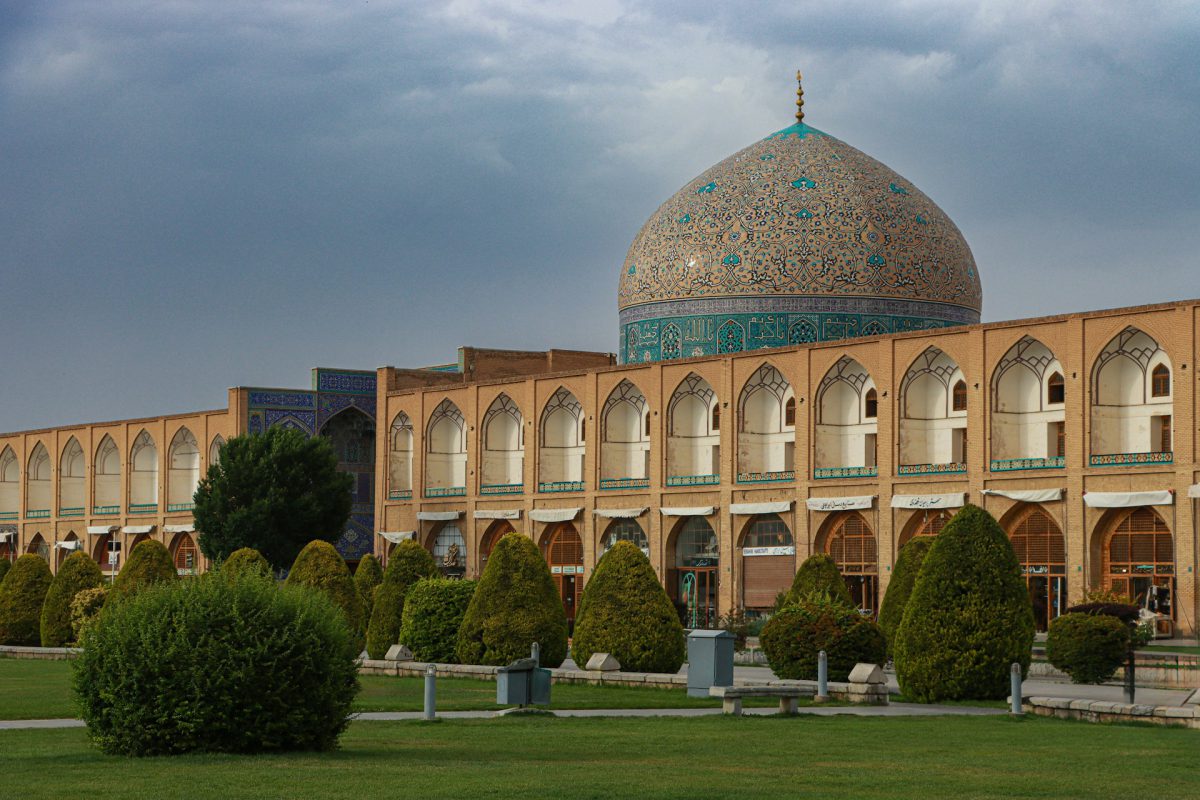Table of Contents
At the core of Isfahan lies Naqsh-e Jahan Square, a UNESCO World Heritage Site that draws visitors year-round. Also known as Meidan-e Emam or Shah Square, this historic hub buzzes with life and stories. Its Farsi name, meaning “The image of the world,” hints at its rich past. It is also referred to as Shah Square or Imam Square (Imam Khomeini Square).
Step into the square and you’re greeted by a mix of impressive buildings, each with its own story. From grand mosques to bustling markets, there’s something to uncover at every turn. Over the years, the square has stood witness to the comings and goings of different rulers, serving as a gathering place and a place for spreading news in times before TVs and radios. It’s not just a square; it’s a living reminder of the city’s history, among all the most important highlights of Isfahan.
Naqsh-e Jahan Square History
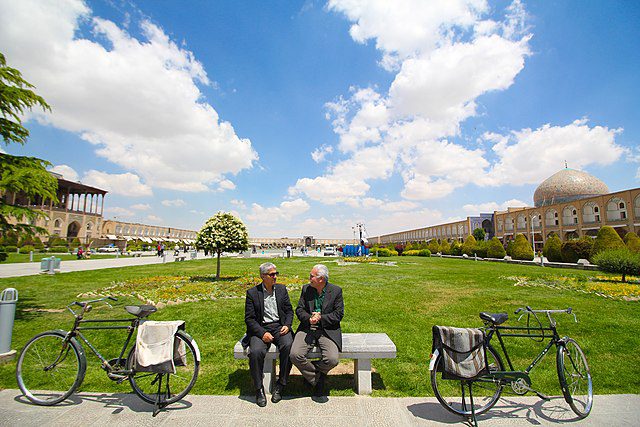
Naqsh-e Jahan Square, crafted between 1598 and 1629 by Shah Abbas, reflects the vibrancy of the Persian Empire’s zenith. Planned by Shaykh Bahai, it symbolizes the empire’s central authority through its key structures: the Imam Mosque for religion, the Imperial Bazaar for commerce, and the Ali Qapu Palace for royal power.
Covering an impressive area of 89,600 square meters, the square bustled with trade by day, offering a lively marketplace under the Safavid architectural style. As dusk fell, it transformed into a lively entertainment venue, hosting performers and gatherings that celebrated Persian culture. From Nowruz festivities to thrilling polo matches, the square was the heart of social and cultural life in Isfahan, embodying the essence of Iran’s rich history and community spirit.
Naqsh-e Jahan Square Architecture
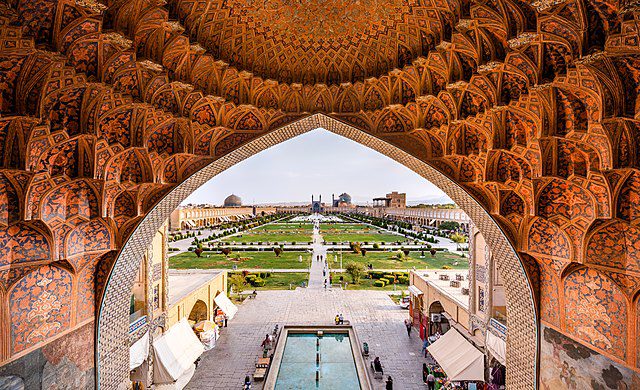
Built under the guidance of Sheikh Bahayee, Naghsh e Jahan Square is a marvel of architecture. It took a whopping thirty-one years to complete, starting in 1598. Spread across a vast area of 560 meters long and 160 meters wide, this triangular square is surrounded by two-story shops. Stepping into this vast space, visitors are immediately captivated by its charm. At the heart of the square lies a fountain encircled by gardens, casting a spell of tranquility. Standing proudly around the square are four impressive structures: the Shah Mosque, Sheikh Lotfollah Mosque, Grand Bazar, and Ali Qapu. These buildings, with their rich history, serve as beacons of cultural heritage, drawing visitors into their midst.
Every corner of the square holds something special. From the intricate designs of the mosques to the bustling energy of the shops, there’s a sense of wonder in the air. Each building tells a story, transporting visitors back in time. Whether exploring the ornate domes or getting lost in the maze-like corridors of the Grand Bazar, there’s a sense of awe that lingers. The square isn’t just a place—it’s a living testament to human creativity and craftsmanship, where the past comes alive in vibrant colors and intricate details.
Naqsh-e Jahan Square Location
At the center of Isfahan sits Naqsh-e Jahan Square, surrounded by lots of cool stuff to see. Head north, and you’ll find the Imperial Bazaar through the Qeisarie Gates. To the south is the awesome Shah (Imam) Mosque.
Nearby, there are also the Shah Historical Bath, Chehel Sotoon Palace, and Hasht Behesht Palace. And if you take a short 20-minute walk, you’ll reach the Si-o-Se Pol, a lovely spot with a lot of history.
How to Get to Naqsh-e Jahan Square
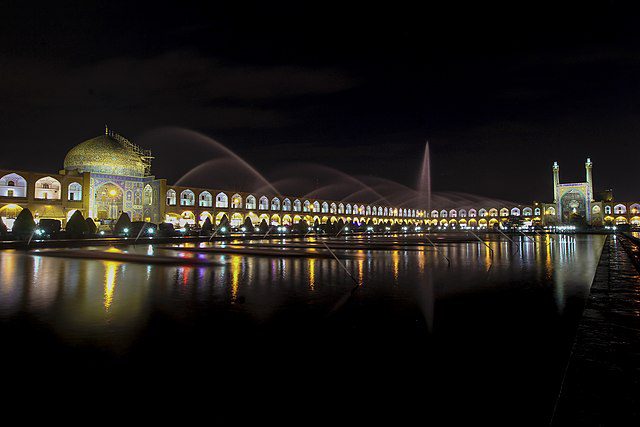
By Car
If you’re driving, head to Ostandari Street for parking. You’ll find spots near the square’s western wall and Shah Mosque’s eastern side, making it easy to park and stroll into the heart of the square.
On Foot
Prefer walking? Start from nearby spots like Hasht Behesht Palace, Chehel Sotoun Palace, Si-o-Se-Pol Bridge, the Bazaar, or the Historical Bath. They’re all close enough to each other for a pleasant walk to Isfahan Square.
By Metro
Coming from afar or the airport? Take the metro to Takhti station. It’s just a 20-minute walk from the square, offering a convenient ride and a short stroll to your destination.
By Bus
Taking the bus? Look for routes passing Central Library or Khorshid Hospital stops. They’re both close to Naqsh-e Jahan Square, making your journey to the heart of Isfahan easy
Recommended Sightseeing Time of Naqsh-e Jahan Square
Naghsh e Jahan Square in Iran is fantastic! You’ll need a whole day to see all the amazing things here.
As you stroll around the square, you’ll be blown away by how awesome it is. The buildings like the Shah Mosque and Sheikh Lotfollah Mosque are super impressive with their fancy designs. Everywhere you look, some beautiful tiles and pictures tell stories about Iran’s past. There’s so much to see and do here that one day might not be enough!
Where to Eat Near Naqsh-e Jahan Square

Finding a great meal around Isfahan Square is easy-peasy! Azadegan Café is a top pick for classic Persian dishes, served in a cozy setting that’s Instagram-worthy. If you’re craving Iranian flavors, head to Bastani Café for a taste sensation.
Need a quick snack? Swing by Roozegar Café. And for coffee lovers with a sweet tooth, Coffee Left or Café 404 have you covered with yummy treats. These spots promise not just good food, but a taste of Isfahan’s culinary scene.
Where to Stay Near Naqsh-e Jahan Square
If you’re looking for a place to stay close to Naqsh-e Jahan Square, you’ve got plenty of options. The closest one is Partikan Hotel, which is pretty basic but convenient. There are also Pars Hotel, Part Hotel, and Safavi Hotel if you’re on a budget and still want to be near the square.
For a bit more luxury, you can check out Piroozy Hotel, which is nice and comfy. But if you’re up for a truly fancy experience, Abbasi Hotel is the way to go. It’s one of the oldest hotels in Iran and offers top-notch hospitality.
Other Attractions Near Naqsh-e Jahan Square
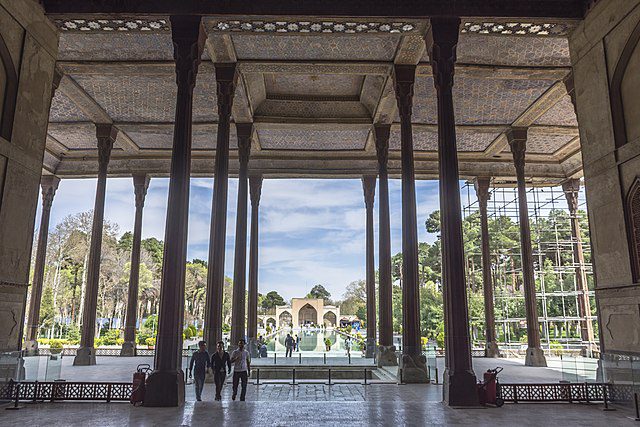
Imperial Bazaar
At the north end of the square, just past the impressive Qeysarie Gates, you’ll find the Imperial Bazaar (Qeysarie Bazaar). It’s like a busy maze of small streets and colorful shops, where you can experience the lively atmosphere of a traditional Persian market.
Shah (Imam) Mosque
Heading south from the square, you’ll come across the magnificent Shah (Imam) Mosque. It’s a stunning example of Islamic architecture, with beautiful designs on its walls and tall towers reaching for the sky.
Shah Historical Bath
Nearby, within walking distance, you’ll discover the historic Shah Historical Bath, a place where people have been bathing in Persian style for centuries.
Chehel Sotoon Palace
As you continue your exploration, you’ll encounter the grand Chehel Sotoon Palace. It’s famous for its lovely paintings and large gardens where you can relax and enjoy nature.
Hasht Behesht Palace
Close by is the elegant Hasht Behesht Palace, known for its beautiful gardens and intricate mosaics. Each of these attractions offers a special glimpse into Isfahan’s rich history and culture, making them must-see stops when visiting Nasgh e Jahan Square.
FAQs about Naqsh-e Jahan Square
Q1: What is the meaning of Naqsh-e Jahan Square?
A1: Naqsh-e Jahan Square, also known as Meidan-e Emam, is the top attraction in Isfahan, a UNESCO World Heritage Site. It’s the must-see place when you visit Isfahan, always bustling with tourists. “Naqsh-e Jahan” means “The image of the world” in Persian.
Q2: What is a fun fact about Naqsh-e Jahan Square?
A2: Naqsh-e Jahan is one of the biggest squares globally, measuring 512 meters in length and 163 meters in width. It’s recognized as a UNESCO World Heritage site.
Q3: Who builds Naqsh-e Jahan Square?
A3: The square as we see it today was built during the rule of Shah Abbas I in 1598. Mohammad Reza Isfahani and Ali Akbar Isfahani, two architects, are credited with designing and constructing the square in its current shape.
Q4: Who was the architect of Naqsh-e Jahan Square?
A4: The main architect leading this massive urban planning project was Shaykh Bahai (Baha’ ad-Din al-`Amili). He concentrated on two main aspects of Shah Abbas’s master plan.
Q5: How old is Naqsh-e Jahan Square?
A5: Naqsh-e Jahan Square was built between 1598 and 1629. It’s now a significant historical site and a UNESCO World Heritage Site. Additionally, it’s one of the largest squares globally.
Last Words: Experience the Best of Naqsh-e Jahan Square with a Customized Tour
Naqsh-e Jahan Square, at the heart of Isfahan, is a UNESCO World Heritage Site known as Meidan-e Emam or Shah Square. This bustling historic hub is filled with grand mosques, lively markets, and centuries of stories. Over time, it has been a gathering place and a center for spreading news, serving as a vivid reminder of Isfahan’s rich history.
When you’re planning a trip to Iran to soak in the beauty of Naqsh-e Jahan Square, it’s best to consider custom-made tours. Among the many tour operators, To Iran Tour stands out. They’re experts at creating unforgettable trips, making sure every detail is perfect.
With To Iran Tour, your journey in Iran will be nothing short of amazing. They take care of everything, from booking your stay to arranging guided tours. So, if you’re ready for an adventure and want to experience the magic of Naqsh-e Jahan Square, trust To Iran Tour to make it happen. We’re here to ensure your time in Iran is truly special.

